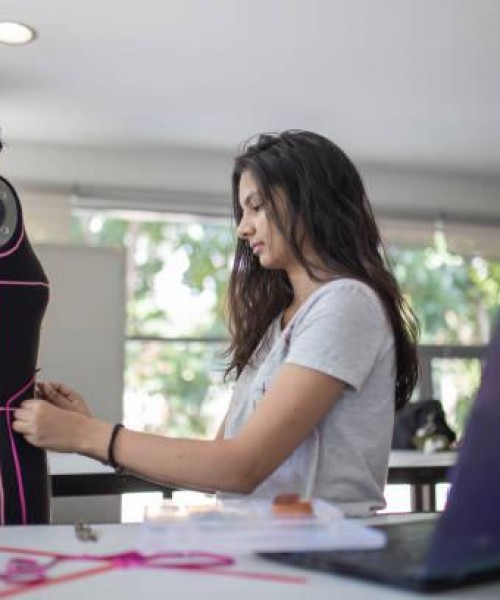Blood Groups:
Blood groups were first identifies in 1900 by Karl Landsteiner at the university of Vienna to ascertain why deaths occurred after blood transfusions. The blood groups most widely known are A, B, AB and O.
Two antigens (an antigen is a substance that an antibody fixes to), one type of antigen attaches to one type of antibody similar to a lock and key. These two antigens and antibodies identify the A, B and O blood groups. The antibodies are called Anti A and Anti B
These antigens form on the surface of the red blood cells. A type blood cells will have the A blood antigen attached, and the body would not produce A blood antibodies. The reason for this is that if A blood antibodies were present, then these would attach and destroy the blood cells. However, should type B blood be inserted, B type antibodies are present. These antibodies would then attach to the antigens of the B blood and destroy the cell. The blood cells start to clump together that can cause a blockage in the blood vessel. This is called "agglutination".
O type blood do not produce any antigens for type A, B or O which makes this group universally accepted by any blood group therefor it is known as the "Universal Donor". AB Blood types have both Anti A and Anti B antibodies and therefore can receive blood from all groups safely. AB blood groups are known the "universal receiver".
Rhesus:
There are many other antigens on the red blood cell. The "Rhesus" antigen is another important factor. It was named rhesus after finding the antigen during research injecting Rhesus monkeys with rabbit's blood.
Not all blood has the antigen. Blood that does have the antigen is defined as RH+ and the Blood that does not is defined as RH-. There is rhesus negative (RH-) and rhesus positive (RH+). RH- does not already contain the RH antibodies and should RH+ blood come into contact with RH- blood, RH- then starts to produce the anti RH antibodies. This does not cause too much of a problem in the first instance as the process of producing the antibodies takes almost a week and the donated blood cells would have died. The major problem occurs should the RH- receives a further dose of RH+ blood as this causes the reaction much quicker due to the presence of the RH antibodies. This causes "Agglutination" and can be fatal. This is especially serious in pregnancy. Should a mother that is RH- has a foetus that is RH+. The mother receives the RH+ blood from the foetus and then starts to produce RH antibodies. These antibodies are then transferred back to the foetus via the placenta and into the foetus's circulation. In the first child, this is not generally a problem as the antibodies will not have been produced in sufficient numbers to do any damage. The huge issue is any subsequent pregnancy. If a following foetus is RH+ the RH- antibodies from the mother will transfer across to the unborn foetus causing a mass destruction of blood cells. This condition is known as "Haemolytic disease of the new born".
TASK 7 - (ASSESSMENT CRITERIA 4)
Explain the structure of the heart.
Label the diagram of the heart - Worksheet 1 below - and explain its structure
TASK 8 - (ASSESSMENT CRITERIA 5.1)
Explain the function of the heart
Concisely describe the function of the heart
The heart is the most vital organ in the body. Its function is to "pump" blood through the circulatory system via arteries and veins. It has what is known as a "double circulatory" system. The first system pumps blood to and from the lungs to expel waste gasses (CO2) and other waste products and to collect the vital oxygen needed to sustain life, provision on nutrients that are essential for growth and repair.
The second system pumps blood to the whole body. Oxygenated blood is pumped into the left atrium via the Pulmonary veins from the lungs. The flow is controlled by the mitral valve as it is passed through to the left ventricle where the heart muscle contraction pushes the oxygenated blood with its thick walls at high pressure through the aorta and into the body. Deoxygenated blood is returned to the heart via the inferior and superior vena cava into the right atrium where it is passed through the tricuspid valve into the right ventricle. Here, at low pressure, it is pumped through the pulmonary artery back into the lungs to expel the waste and to collect oxygen to be pumped around the body again. This function takes place continuously and the heart pumps approximately 7200 litres per 24 hours (based on an average heart rate of 72 bpm).
TASK 9 - (ASSESSMENT CRITERIA 5.2)umflhdzx
Explain coronary circulation
The heart muscle (Myocardium) requires a blood supply to enable it to function correctly. This supply allows the heart to be provided with the oxygen required along with the extraction of waste products, (CO2 etc). Coronary Circulation is the supply of this blood to the myocardium. The oxygenated blood is provided by the coronary Arteries which can either be epicardial (run along the surface of the heart) or Subendocardial which are the arteries that run deep within the myocardium. Epicardial arteries are self regulating providing a constant level of supply to the heart muscle. They are very narrow and are prone to blockage which can cause serious heart damage such as angina or a heart attack due to the arteries being the only source of blood to the myocardium. Deoxygenated blood is removed by the cardiac veins.
TASK 10 - (ASSESSMENT CRITERIA 6.1., 6.2 and 6.3)
Describe the major arteries and veins of the circulation system.
Explain the relationship between the structure and functions of arteries, veins and capillaries.
Explain the ways in which the body controls blood vessel size and blood flow.
Complete Blood Vessels sheet - class-based activity
Draw up a table to show how the structure and functions of arteries, veins and capillaries differ.
In bullet point format explain the ways in which blood vessel size and blood flow are controlled
在红细胞上有许多其他的抗原。“恒河猴”抗原是另一个重要因素。它被命名为恒河猴在研究过程中发现的抗原注射恒河猴与兔的血液。
并不是所有的血液都有抗原。有抗原的血液被定义为“相对湿度+血液”,而血液中并没有被定义为“相对湿度”—。有恒河猴阴性(铑)和恒河猴阳性(相对湿度+)。铑-不已经包含的铑抗体,应该铑+血液接触到与铑-血液,铑-然后开始产生抗-抗体的抗体。这不会引起太多的一个问题,在第一个实例的过程中产生的抗体需要几乎一个星期,捐赠的血细胞会死了。发生的主要问题应该是相对湿度-接收到一个进一步的剂量的相对湿度+血液,因为这会导致反应更快,由于存在的相对湿度抗体。这将导致“凝集”,并可能是致命的。这是特别严重的怀孕。如果母亲是Rh具有胎儿是Rh +。母亲从胎儿接收Rh +血然后开始产生Rh抗体。这些抗体会转移到胎儿通过胎盘进入胎儿的血液循环。在第一个孩子,这通常不是一个问题,因为抗体将不会产生足够数量的任何损害。这个巨大的问题是任何后续的怀孕。如果后面的胎儿是RH + RH -来自母亲的抗体将转移到引起血细胞大规模杀伤性胎儿。这种情况称为“新生儿溶血病”。










